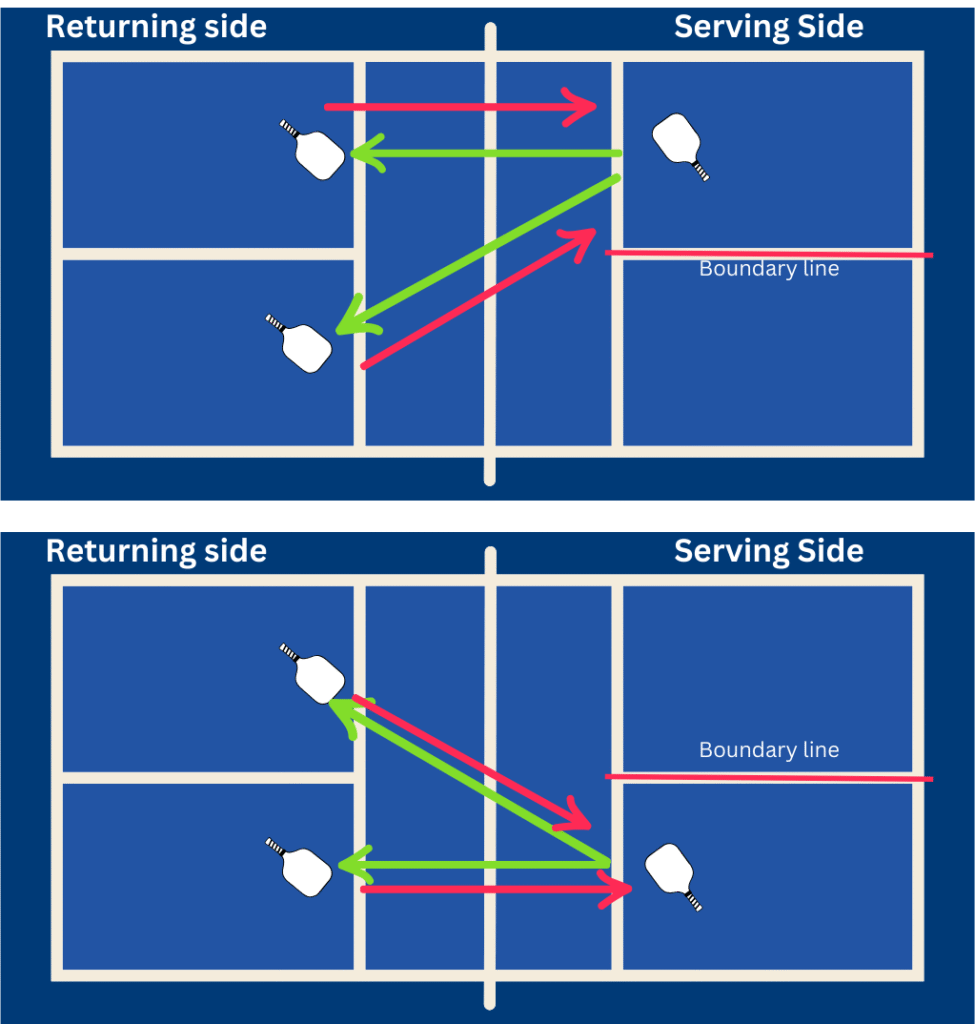What does side out mean?
In pickleball, the term “side out” means that the serving team loses the serve and the other team gets a chance to serve.
Here’s how it works in context:
- In doubles play, each team’s two players get a turn to serve before the serve goes to the opposing team.
- When both players on one team have lost their serves, the referee (or players) call “side out”, signaling that it’s now the other team’s turn to serve.
Example:
- Team A starts serving — Player 1 serves and loses the rally → the serve goes to Player 2 on Team A.
- Player 2 also loses the rally → side out is called.
- Now Team B begins serving.
So, “side out” marks the change of serve and control from one team to the other.

How It Works (Step-by-Step)
1. Serving in Doubles
- Each team has two players, and both get a chance to serve before the serve switches sides.
- The first server is called the “first server”, the second is the “second server”.
2. Losing a Rally
- If the serving team commits a fault (for example, hits the ball out, into the net, or violates a rule), they lose the rally.
3. Second Server Serves
- When the first server loses the rally, their partner (the second server) takes over.
- They continue serving from the correct side until they also lose a rally.
4. “Side Out” Is Called
- Once both servers on a team have lost their serves, the referee (or players) announce:
“Side out!”
The other team now becomes the serving team.

Example Rotation
| Team | Server | Action | Result |
|---|---|---|---|
| Team A | Player 1 | Serves first | Wins a few points |
| Team A | Player 1 | Faults | Serve goes to Player 2 |
| Team A | Player 2 | Faults | Side Out → Team B now serves |
| Team B | Player 1 | Serves | Game continues |
Single vs. Doubles Differences
| Format | Who Serves | When “Side Out” Happens |
|---|---|---|
| Singles | Only one server per side | After one fault, immediately |
| Doubles | Two players per team serve | After both players lose their serve |

Why “Side Out” Matters
- It balances the game — both teams get equal serving chances.
- It keeps matches strategic, since players must capitalize on their service turns.
- It affects scoring: only the serving team can earn points. During a “side out,” the other team has a chance to start scoring.
Pro Tip
In official scoring calls (for doubles), you’ll often hear something like:
“4-2-1”
- 4 = serving team’s score
- 2 = receiving team’s score
- 1 = server number (first or second)
After a “side out,” the next team’s server starts with “0” as the server number — indicating the first server for that team.
Visual Overview
Imagine Team A serving and losing both serves — the referee calls “Side Out,” and Team B gets the ball. The teams switch who serves, but don’t change sides of the court until the next game or after 6 points in some formats.
Summary
| Term | Meaning | When It Happens | What It Triggers |
|---|---|---|---|
| Side Out | Change of serve | When both players on a team lose serve | Opposing team gets the serve |
FAQs
When does a “side out” occur?
In doubles, after both players on one team have served and lost their rallies.
In singles, it happens after one fault by the server.
Who calls “side out”?
In official matches, the referee calls “side out.”
In casual games, players call it themselves to indicate the serve change.
What happens after a “side out”?
The opposing team begins serving.
The player on the right-hand side (even court) always serves first.
Is there a “side out” at the start of the game?
Yes, but it’s special.
At the start, only one player on the first serving team serves before a “side out.”
This prevents the first team from having an unfair scoring advantage.
READ ALSO: Eastern grip VS Continental: pros and cons
- How important is the Pickleball backhand? - November 18, 2025
- What does side out mean in pickleball? - October 17, 2025
- What kind of ball is used in pickleball? - September 18, 2025
1 thought on “What does side out mean in pickleball?”